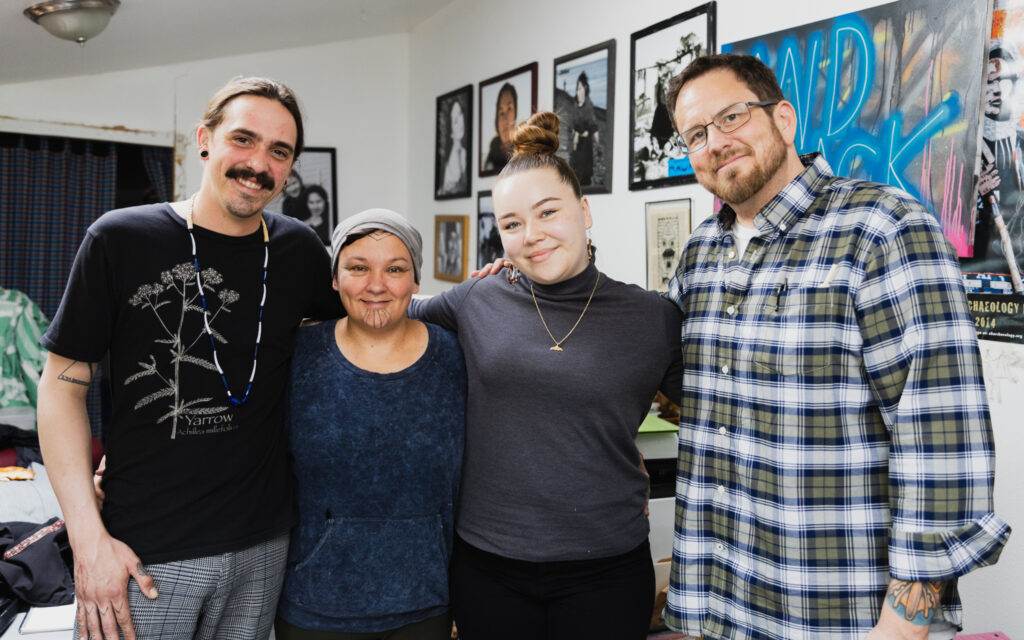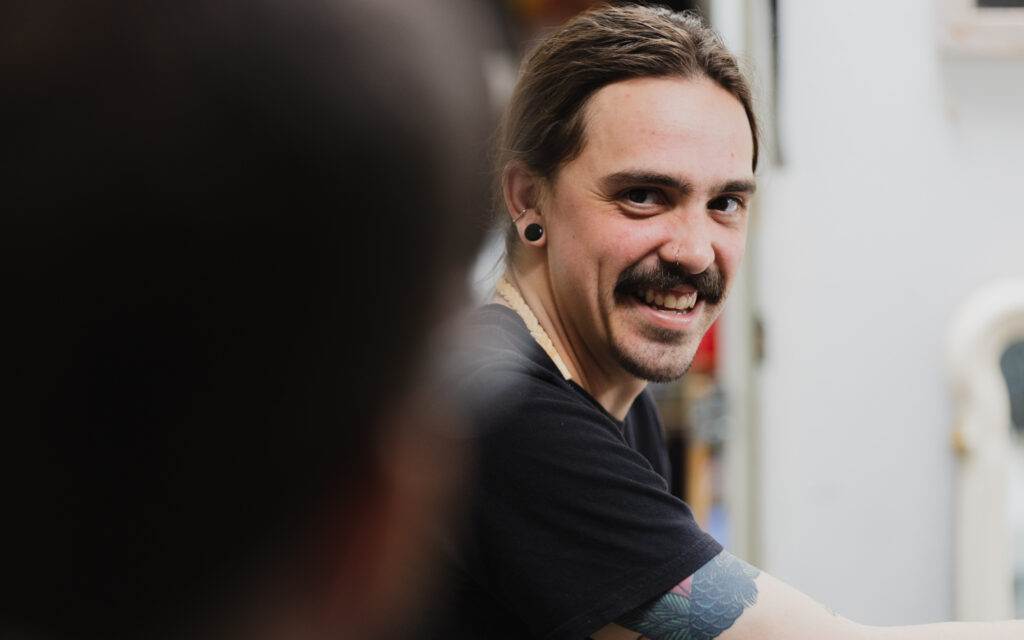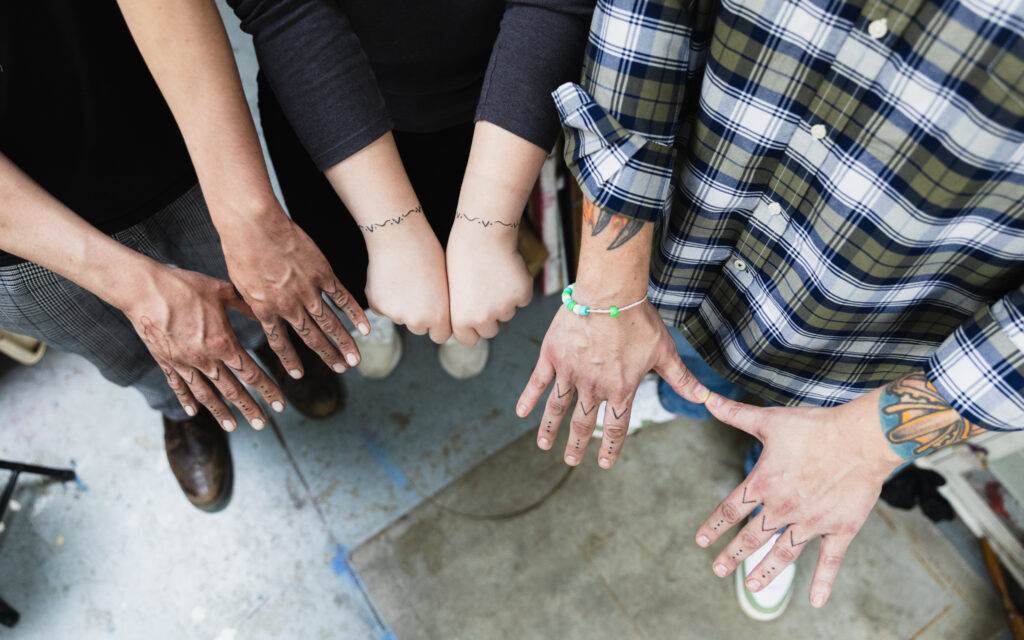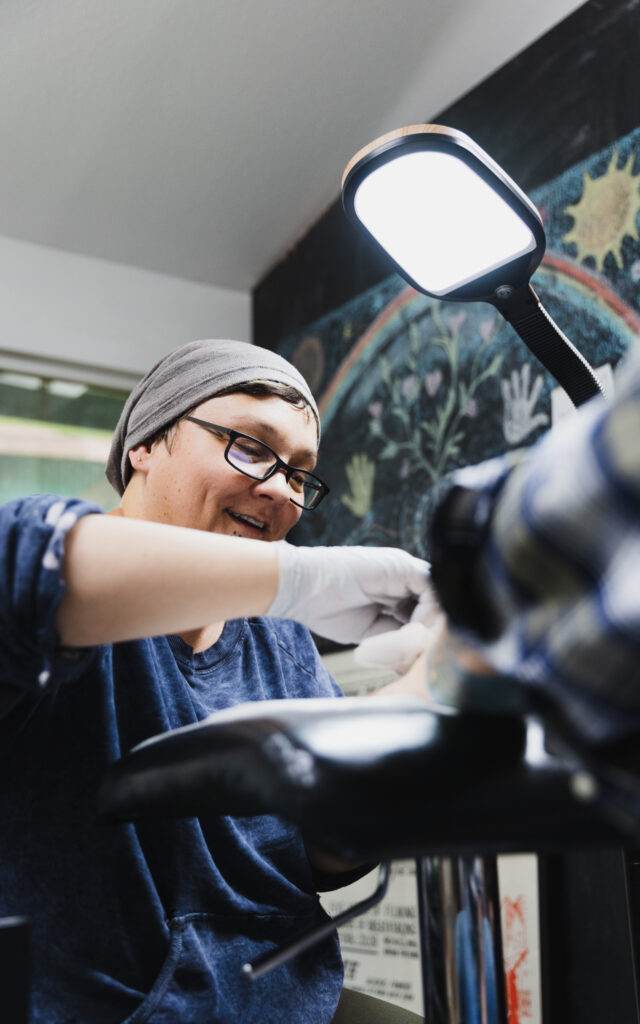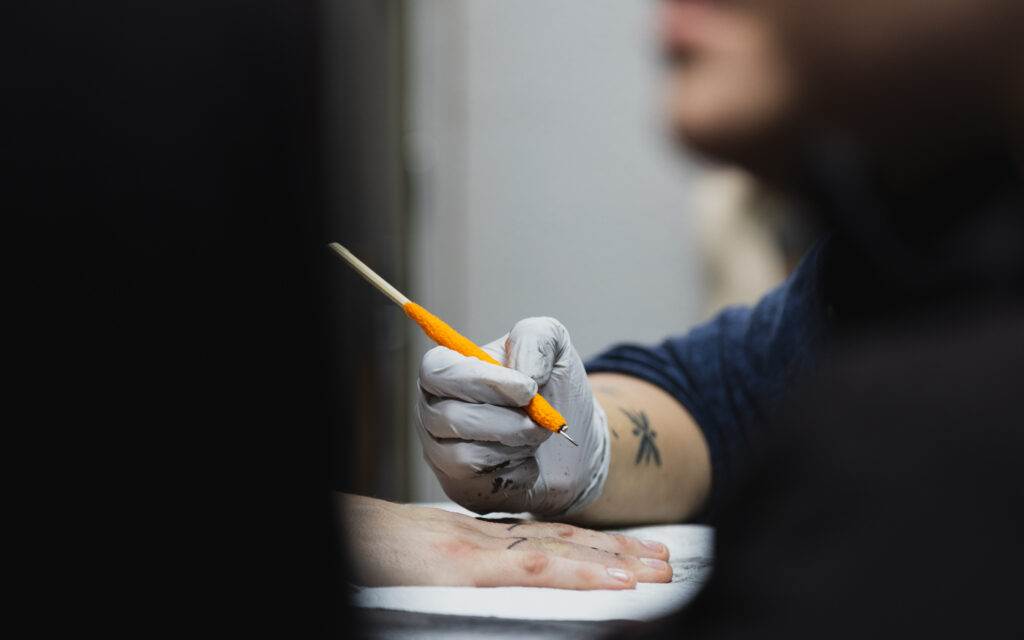03 Aug Bonded by Blood (and Ink)
Warning: This story contains images that are potentially triggering to those who are sensitive to needles!
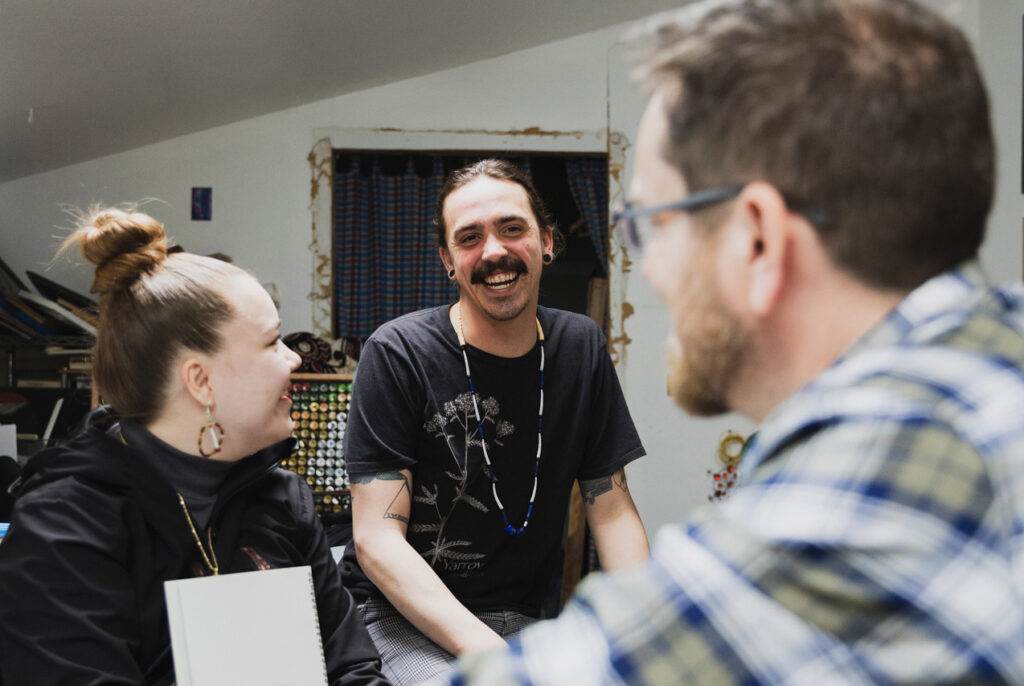
Larry Oskolkoff joined CITC as the manager of Tribal Partnerships in July of 2022. It’s a job rooted in bringing people together. He made a lot of new relationships during his first year, but there are two in particular that stand out from the rest.
First, Larry met Tayler Higgins through CITC’s Youth Advisory Council. Tayler is a member of the council and a current intern with Get Out the Native Vote. Turns out, she’s also Larry’s cousin.
Then Larry met Cody Henrikson through the Tribal Youth Leadership Summit. Cody is a Bentah STEAM Academy instructor at Knik Tribal Council. He’s also Larry and Tayler’s cousin.
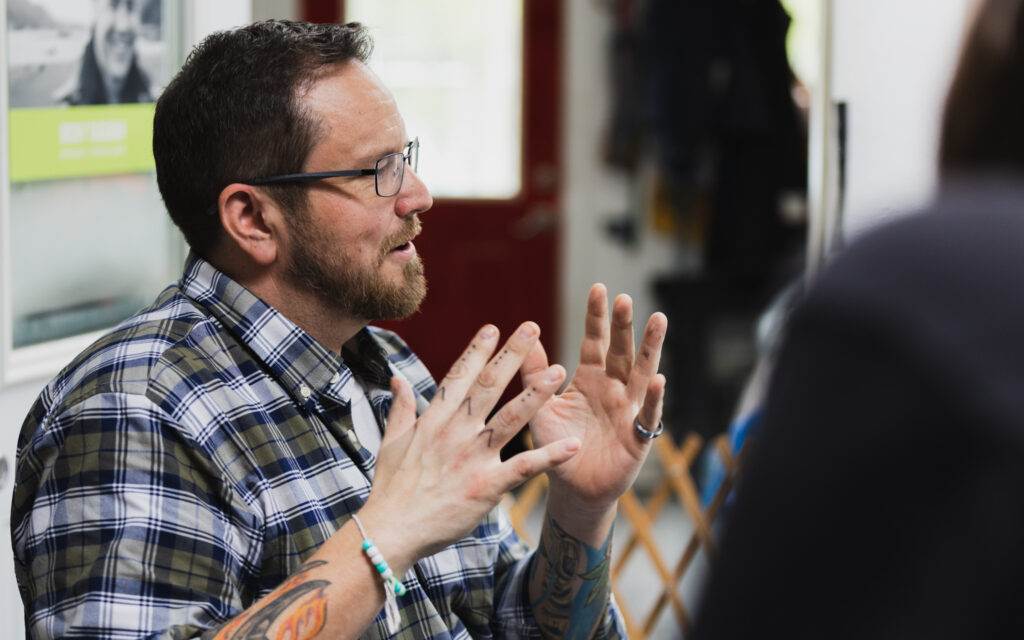
Larry, Tayler, and Cody come from a family based in Ninilchik. However, it wasn’t until this year that all three crossed paths and discovered their bond. Here’s a brief oral telling of how they came together—and the creative way they chose to celebrate their family ties.
Larry: I didn’t have a strong connection with my father’s side of the family when I was growing up. I knew I had a lot of family out there, but I’ve never been super closely connected to most of them. I’ve joked over the last couple years that I assume we are related if you can pronounce my last name because almost nobody can.
Cody: I was told through my work to sign up for this [the Tribal Youth Leadership Summit] and I was like, “Sure, yeah, sounds great.” I love CITC, and I love getting out of work a little bit [laughs]. I signed up, and then I got an email from Larry Oskolkoff, and I was like, “Why is my uncle who’s passed on sending me emails?”
Tayler: I was at CITC going to my Youth Advisory Council meeting and I met Larry. I saw the Oskolkoff name, and I was like, “Oh, man, we’re cousins. My grandmother was Flora Meehan Oskolkoff.” It was cool to meet some cousins of mine.
Larry: I think it’s been cool because not only is it fun to connect with family that knows our culture and heritage, but they’re both good people. I don’t have to avoid them at Fred Meyer or dodge their texts [laughs]. They’re both actually very good people that I enjoy talking with.
While at the Tribal Youth Leadership Summit, we were meeting in the morning for breakfast and I overheard Tayler and Cody talking about tattoos.

Tayler: We were talking about traditional tattoos. I’ve been wanting one so bad, and I was like, “Oh, my gosh, this is the conversation for me right now! I would love this.” The idea of getting a traditional tattoo with my cousins sounded like a great way to connect with them while also connecting with our culture. We were planning it, and then Larry comes in…
Cody: I was telling Tayler I think I’m going to get some traditional tattoos—kind of trying to get her to share this excitement with me. And she was like, “Oh, I really want to do that with you.” And I was like, “That would be a great experience!” And then Larry popped in and said, “I don’t know what it is, but I’m down!”
It didn’t take long for it to become official: Larry and Tayler piggybacked on Cody’s tattoo appointment with Holly Nordlum and the three started planning their designs.
Larry: Cody is actually where I got all of my information from for the tattoo.
Cody: I finally found a design I wanted—it was one you find in a lot of artifacts and stuff. The Kenai tribe has it on their fish camp logo for their educational fishery. It represents the three volcanoes you can see from there. Our Native heritage comes from Kenai, in part. And you can pretty much see those same three volcanoes from Ninilchik. It’s pretty easy to understand they’re volcanoes and smoke is coming out of them. Three is also a sacred number for us.
Tayler got really creative and went and designed her own traditional inspired ones.It was an amazing process. We all have kind of different tattoos, but they’re still linked together and have the same theme throughout. I find that really special.

Tayler: The waves are representation of the ocean because our Dena’ina people of Ninilchik utilized both the land and ocean in our subsistence practices. The twelve dots are to respect and honor the ancestors before me. The three triangles in our tattoos represent Iliamna, Mt. Redoubt, and Mt. Spurr—three beautiful volcanos visible across from our village. These designs help to remind me of our beautiful home, my wonderful cousins, and this unique connection we share. I was so happy to see the design come together.
These tattoos took on meanings that go far beyond what meets the eye.
Larry: I never really felt that deep connection to my culture. I almost had imposter syndrome. It meant a lot to me because, as much as I didn’t have that deep connection like I wished I had as a kid, I remember growing up going to the beach. I would go to Ninilchik at least once a year in the summer. I remember the big rocks right there on the beach that you run up to. And I remember my dad would fish. And then last year I got to take my kids down there. To go there and do that, then do the tattoo thing with family and embrace the culture that I never really had a connection with, and to wipe away a lot of that imposter syndrome in the process, was big for me.

Cody: I grew up always being told I was Native. I knew I was Native, but kind of not, in a way. It was something that was hard for me to see myself as for a long time. Because I’m so light-skinned, I felt like I really had to fight for my culture. And I had to literally do academic-level research on, you know, what is my heritage? What is my culture? When I met Larry and he had talked to me about not always feeling the most centered in his culture, I was like, “Oh, I know a hundred percent what you mean and what you feel. I feel like I fight for it every day.”
And that’s why I really wanted these traditional tattoos. It’s something I now have on my hands that I wear wherever I go. I wanted something where I could be visibly seen as Native.
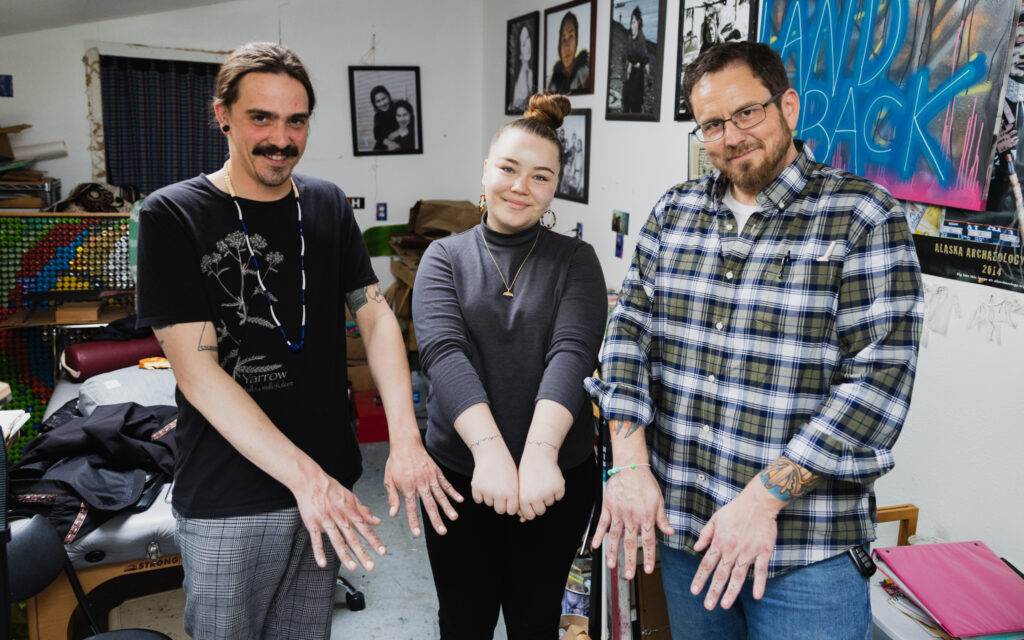
Tayler: I relate to Cody and Larry. I’m a light-skinned girl with blonde hair and blue eyes. People used to try to take away my identity, who I was, and really try to count me out. Growing up, I had to always defend my Native culture. I learned a lot from my mother and shared my knowledge with people around me. I love being a young Native woman and still having the opportunity to learn more about the culture and history of our people, while looking forward and working to help shape the future of youth after us. It’s important to create safe spaces—teaching them that they are worthy of being in any space, and they are allowed to comfortably embrace their culture and heritage no matter how they look.
[Now] everywhere I go, I have this constant reminder. I feel so filled with joy because it’s like our ancestors coming to remind me that we’re still here. We’re still connected. We’re living representations of our ancestors and those before us, embracing their strength and resiliency. It was such an honor and privilege to be with loved ones getting these tattoos.
Cody: It is amazing and heartwarming and the whole process was just filled with laughter and joy. You look at those photos and we’re all smiling so big the whole time, sharing memories, and learning about our connections with each other. Those memories and experiences also mark our bodies—maybe not in the most visible ways, but it is still something we carry with us in everything we do.
